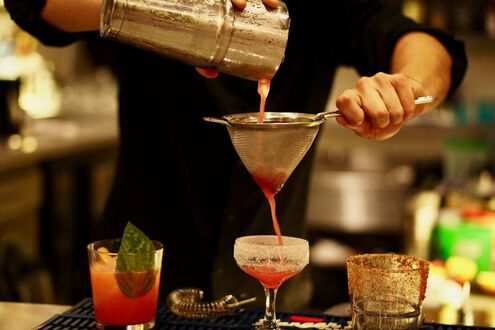|
Big food companies across the country have been hit hard by what can only be described as a serious loss of trust by their consumer base. Coca Cola, Kraft, Nestle and Mondelez [parent company of Nabisco] are just a few food giants that have seen their CEOs resign. Granted, these companies are alive and well and likely to perform just fine moving forward, but their age-old model of mass-scale, low-cost production is not resonating like it did decades ago, back in the day when all you needed at a baseball stadium were hot dogs and nachos. So what does this mean for restaurants? Big things, all revolving around modernization. All consumer trends right now point to the little guy, the mom-and-pop-ish, locally sourced, small-scale production center where business is made up of guests who know and trust the product. To many, ‘big food’ is synonymous with chemicals, additives, fillers and other elements that consumers are sick of putting into their bodies. A growing clientele is ready and willing to pay a premium for ingredients they trust. This means going to restaurants that embody these same qualities. Each of these big food companies has extended great effort in building their product portfolios to include more ‘trusted’ brands. Kellogg, for example, recently purchased RX Bar, the ‘No BS’ protein bar maker, for a whopping $600 million. Why? In all likelihood, to help modernize the Kellogg brand with a product that has clearly resonated with a newer-age clientele. For restaurants, this means you may want to take a look at your menu mix and assess whether your approach truly appeals to your guests today. Does this mean that as a restaurant you should drop everything, revamp your menu and change out your suppliers all at once? Of course not. Coca Cola will never relinquish its soda business because that’s the core of the brand—they’ve simply built onto that brand by acquiring names such as Odwalla and Zico. As a restaurant owner, this means taking a step back, assessing what’s truly at the core of your business, and finding simple ways to modernize so that you can retain your identity while coming across as new and revamped. This may not always be a food-related change. I recently visited what many would call a local dive in Santa Monica. The place was sitting on prime real estate, just steps from the ocean, and served a modest-yet-comprehensive menu of quality food at low prices. A true gem amidst its over-hyped and over-modernized neighbors, but the atmosphere here was akin to a run-down Irish pub. What an outdoor patio and natural light would do to this place! Yes, this would entail a significant remodel, but at the end of the tunnel would emerge a new, improved version of this restaurant that nobody would consider a dive. A transformation like this leads to higher demand, and a resulting lift in the bottom line. This restaurant is the exact kind of seasoned mom-and-pop establishment that stands to benefit the most from an internal assessment and immediate action steps to bridge the gap between product offering and consumer needs. Moving the focus back to the menu, if you see that an item, or even an entire category, isn’t selling like it used to, then it’s time to revise the ingredient mix or even just your guests’ overall perception. If you hand-grind your burger meat and roll the patties daily, then promote the heck out of that process by detailing it on your menu and table collateral. If you source locally, make sure your guests know. If you notice that more and more guests are subbing out American cheese for gouda, then you’ve found a good replacement or upsell opportunity. The list goes on. If big food companies relied on classic soda flavors, ready-made mac ‘n’ cheese and processed snacks now like they did ages ago, they’d be going the way Sears and K-Mart have gone by not innovating with the rise of online retail. To put it bluntly, it’s just a matter of getting with the times, but thankfully it can be done quite handily. It’s all a matter of observation and small steps to follow what your guests are looking for. Next time you’re at the grocery store, browse through some of the healthier brands you’ve become familiar with and look to see if you can find a name like Mondelez or Kellogg nestled on the package. Another example of small steps and necessary modernization.
0 Comments
Leave a Reply. |
AuthorBenjamin Brown is a seasoned restaurant writer and hospitality consultant, serving up SoCal's hottest food news and reviews. Categories
All
Archives
June 2021
@Foodie_Biz |
|
Home
About
Blog
Consulting Tips
Contact
Legal
|
Foodie Biz provides restaurant news and reviews for the food community, as well as consulting advice for restaurant owners and other hospitality professionals.
Contact Foodie Biz for media opportunities and freelance consulting projects. Contact Foodie Biz |




